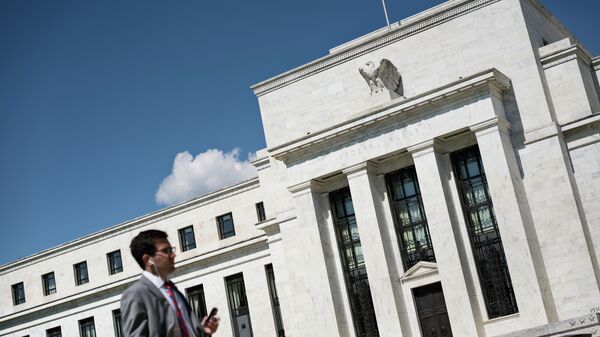Kristian Rouz – An unfortunate combination of a yet another decline in oil prices, a subsequent Third Avenue demise and nervousness of the upcoming Fed policy meeting provoked a weakening in the US dollar FX rate to its seven-week lowest on Tuesday.
Investors are increasingly insecure of the gloomy outlook for the US energy sector, while a high-yield fixed-income crash threatening to spread to the entire US bond market impaired the reputation of the US-based assets as a safe haven.
Now might be the right time to sell some of the hottest US assets at their peak price, unless the junk bond sell-off wears out.
International investors have also become bearish of the euro, even though the European Central Bank hinted at potentially tighter monetary conditions amidst the accelerating growth by having abstained from loosening its policies in early December.
The skyrocketed yield on US junk bonds triggered some buying, and traders ditched their currency positions in both the dollar and the euro to capitalize on US high-yield bonds before their possible final demise.
The greenback is exposed not only to the Fed policy meeting decision to be delivered on 17 December, but also to the wording of the message that accompanies the actual policy move. Currently, the regulator is expected to perform at least four subsequent rate hikes in the next year.
"Given all the concerns, there is a risk that the Fed could opt for a dovish rate hike and downgrade the path for future rate increases," Yujiro Goto of Nomura said.
Should that happen, the dollar is poised to weaken further.
The dollar index measuring its value against other major currencies dropped 0.15%, while the measure for the euro slid 0.2%, even though the improvement in German business sentiment supported the common currency.
“Some people are taking profits [on the dollar’s gains] and waiting for next year for the divergence trade to reassert itself to go long the dollar again,” Neil Mellor of BNY Mellon said.
“Then again, if the Fed surprises with no hike, however unlikely that is, or sends a particularly dovish message about the path for rates, then people will continue selling the dollar.”
In economic fundamentals, US consumer inflation halted at zero in November, stirring an even greater concern of the Fed’s policy dovishness. Housing sector confidence also retreated from its 10-year highest in December amidst rising costs of labour and land prices.
Historically, increases in borrowing costs undertaken by the Fed, provoked selloffs in the dollar immediately after the policy change was announced.
The question is, whether the weakening of the dollar turns out to be a sustainable trend. Even though it likely does not, an increased international volatility would attract less capital in the US amidst the tighter monetary environment.





